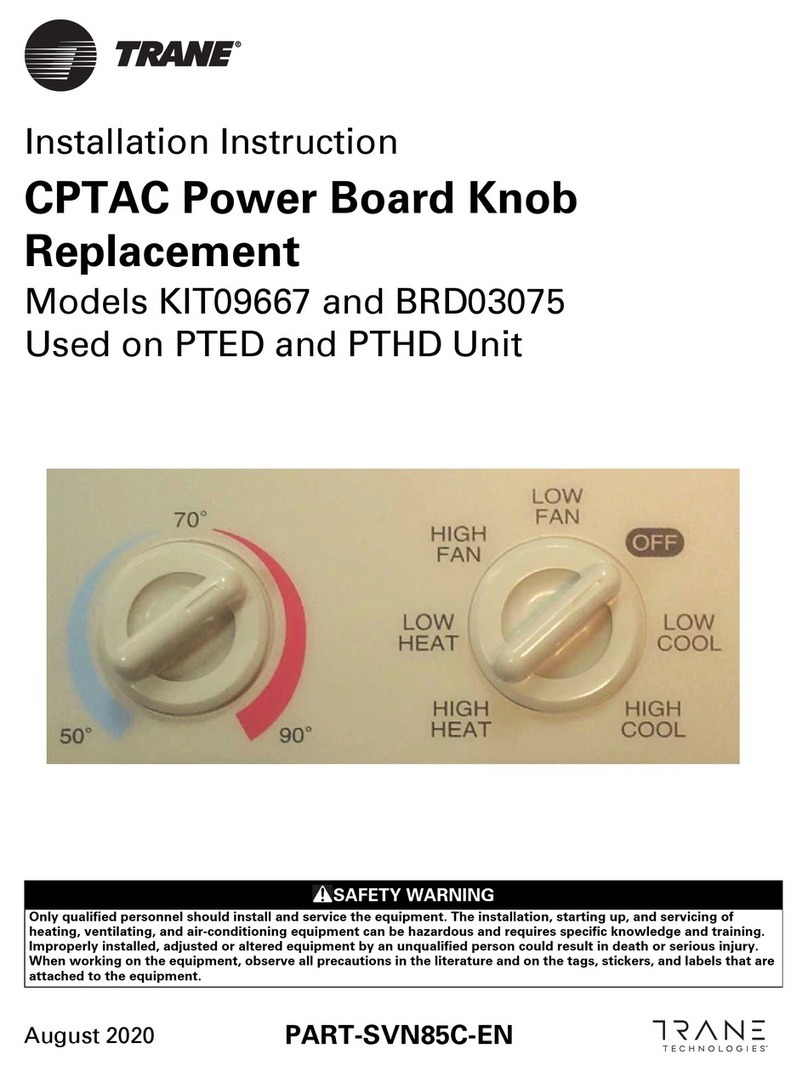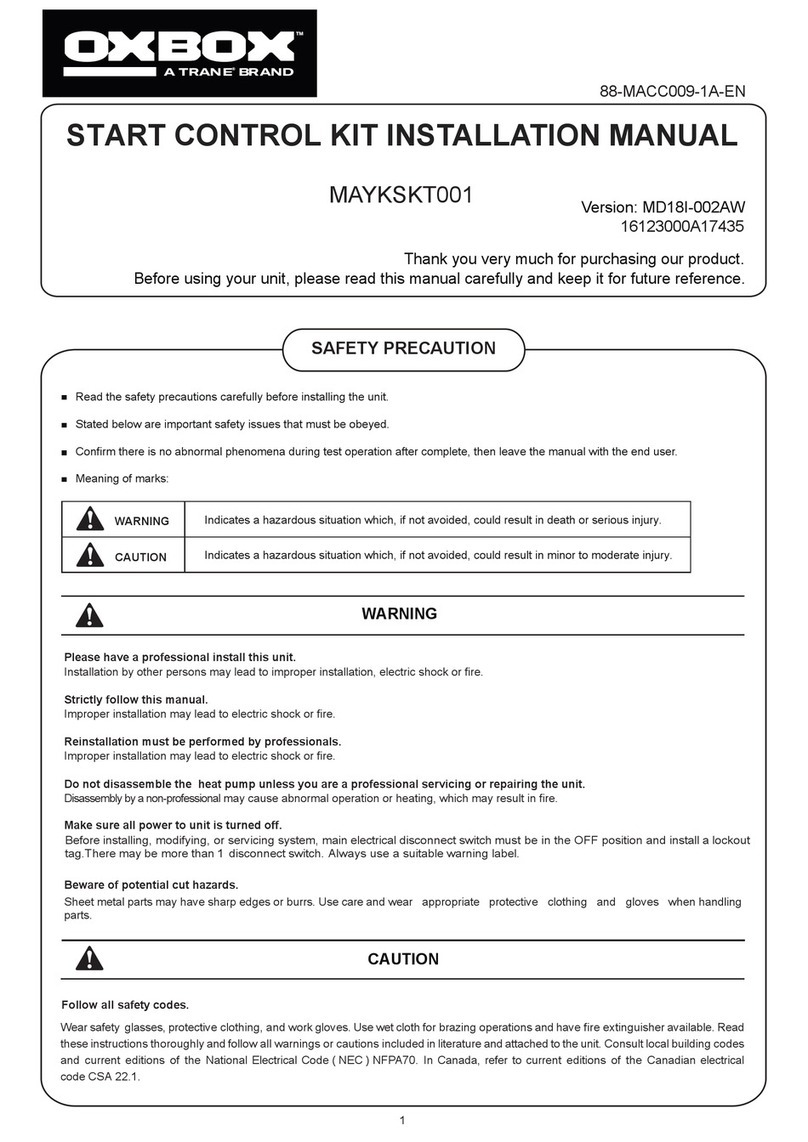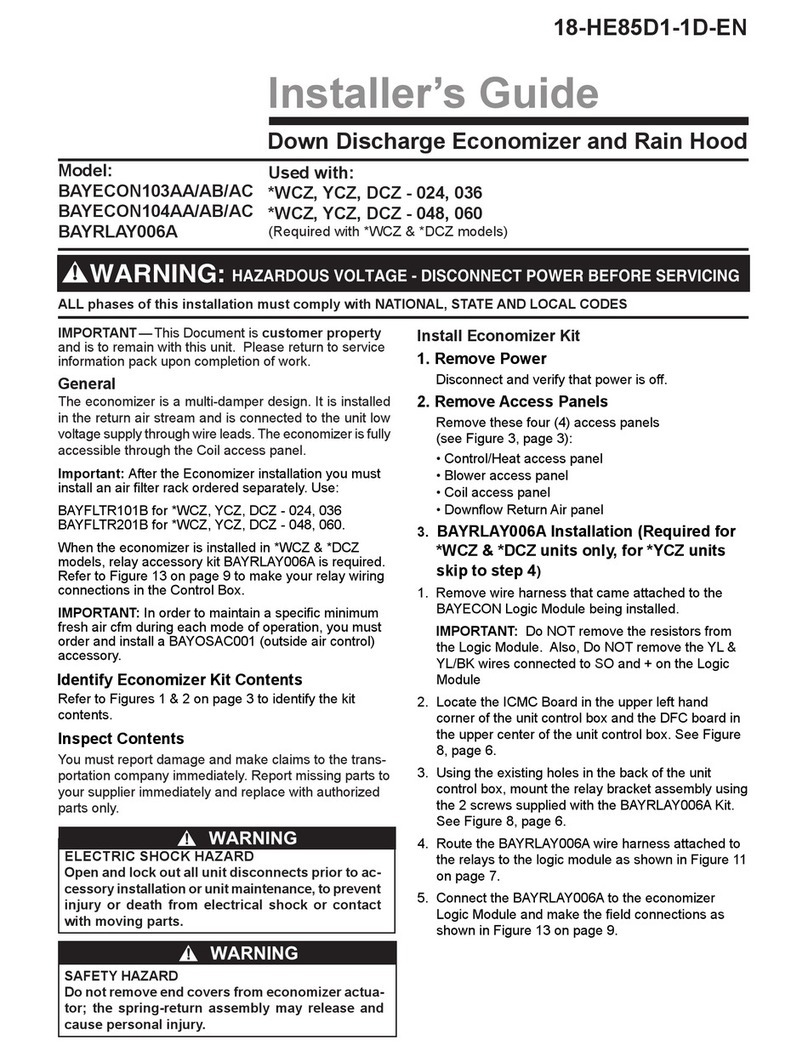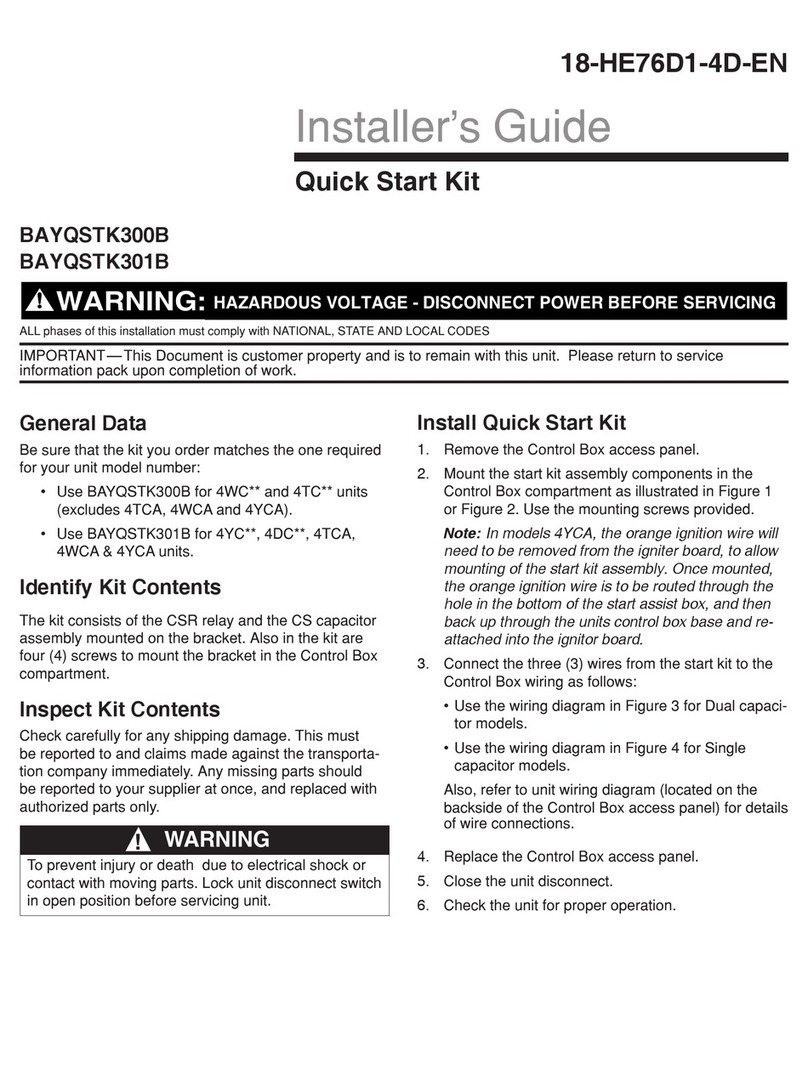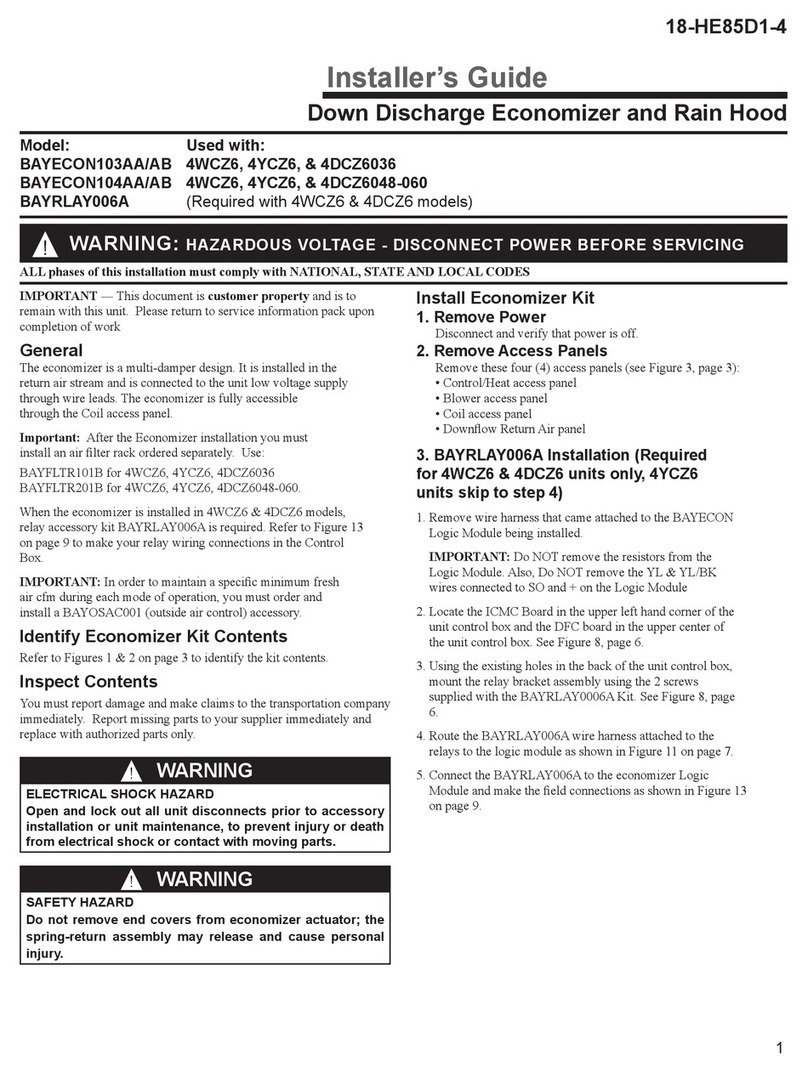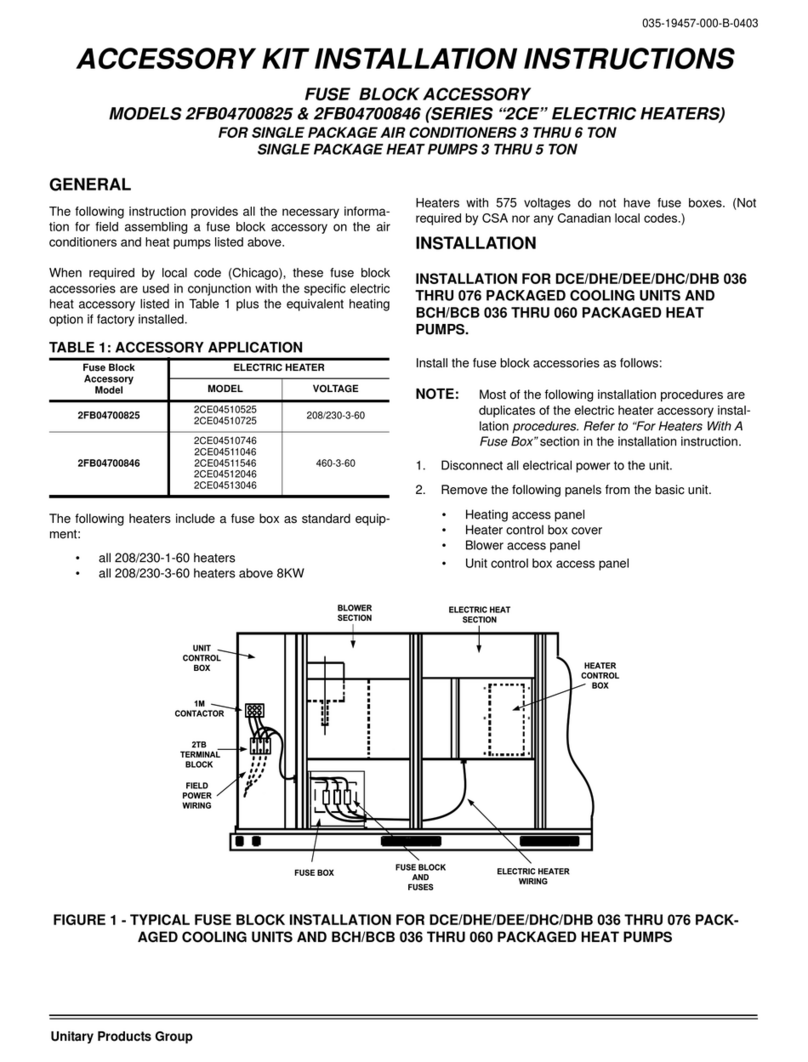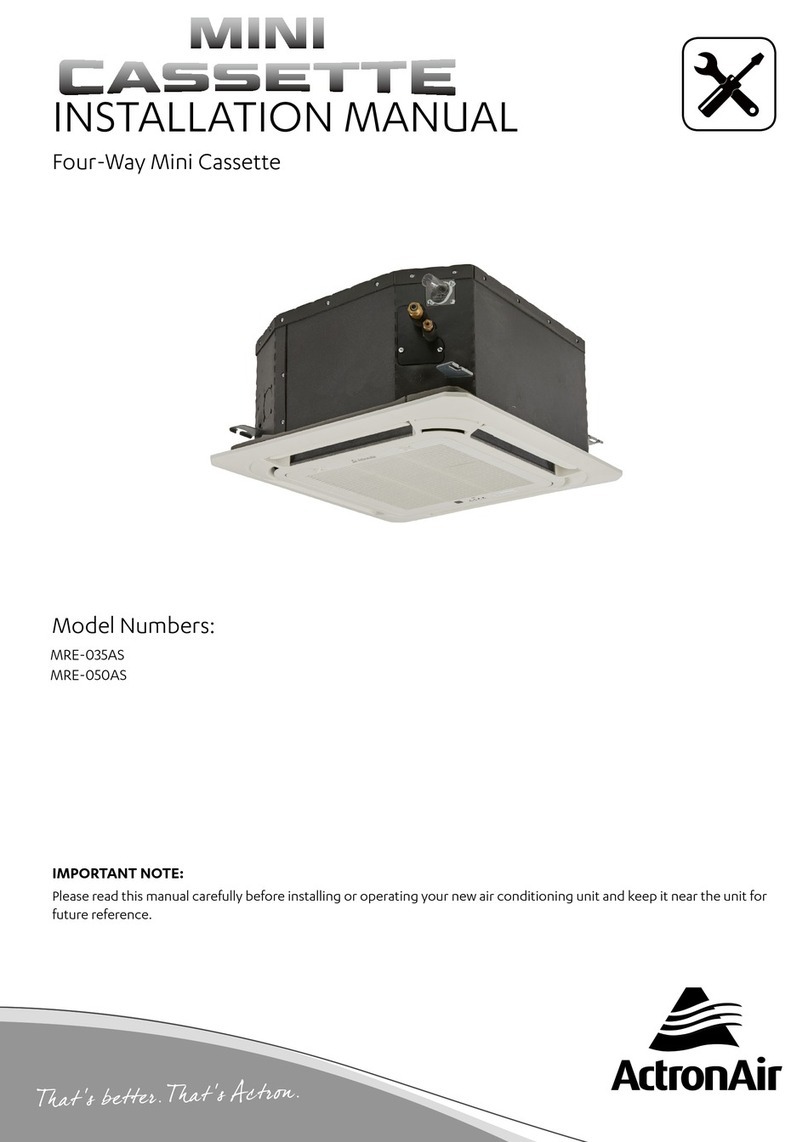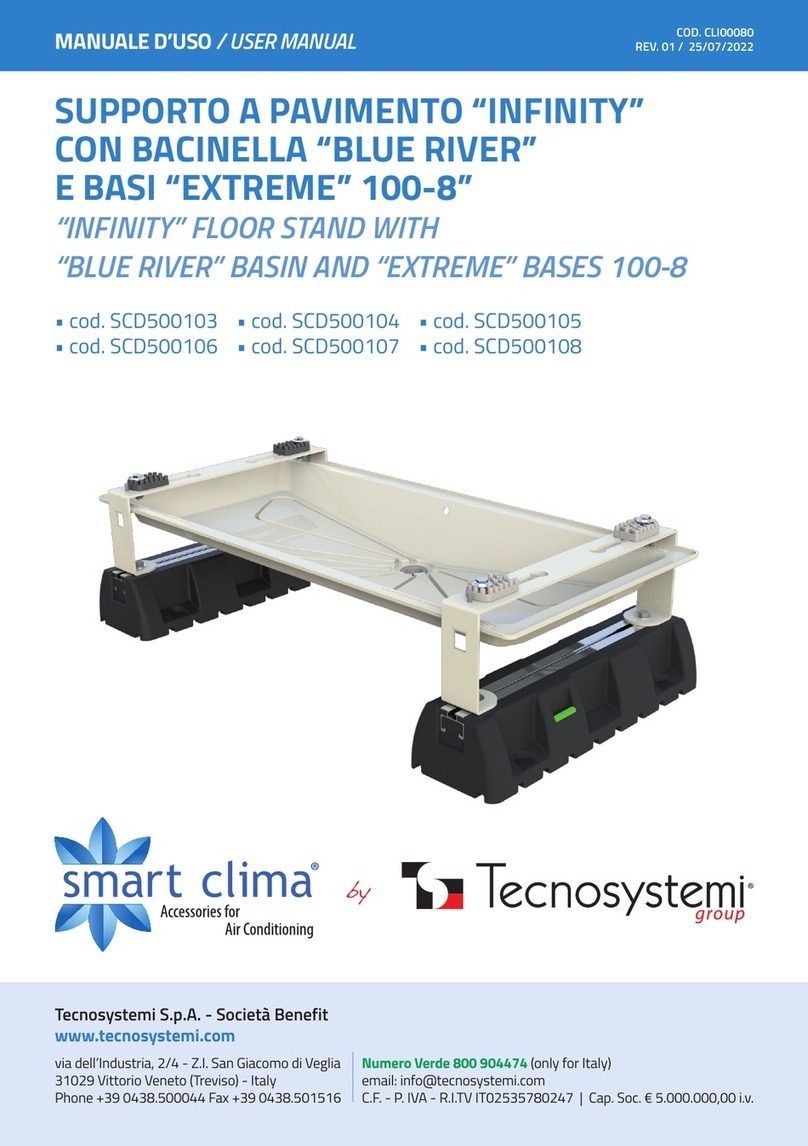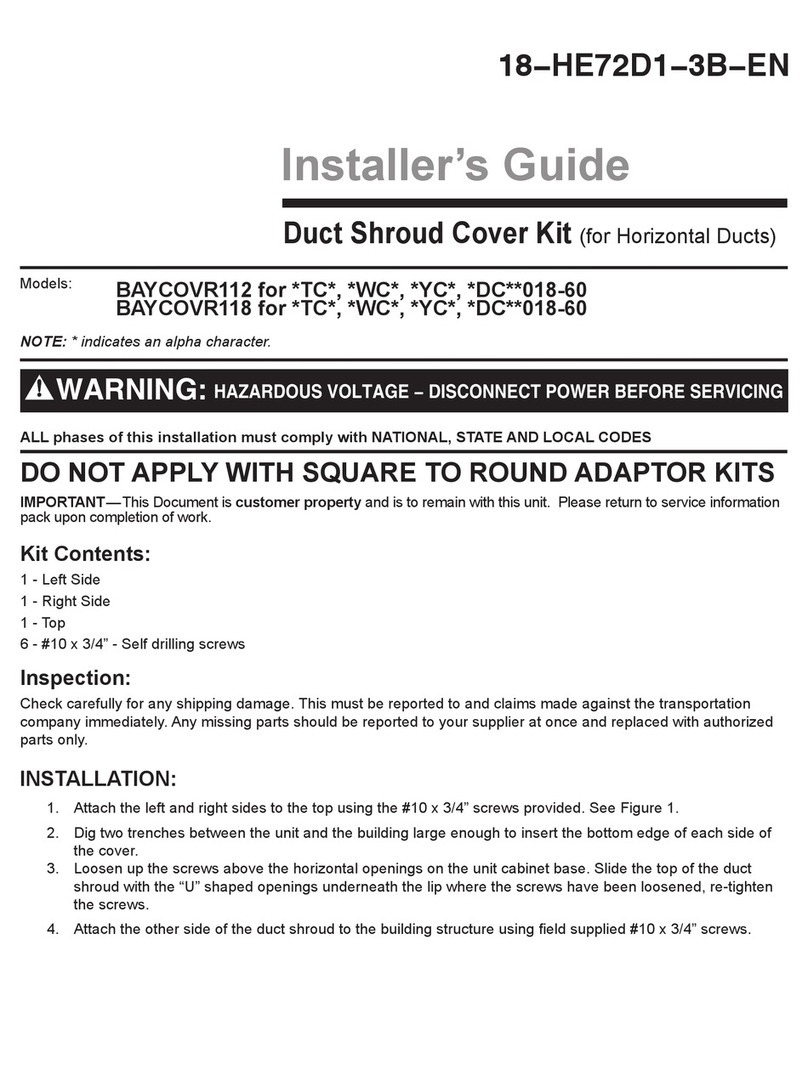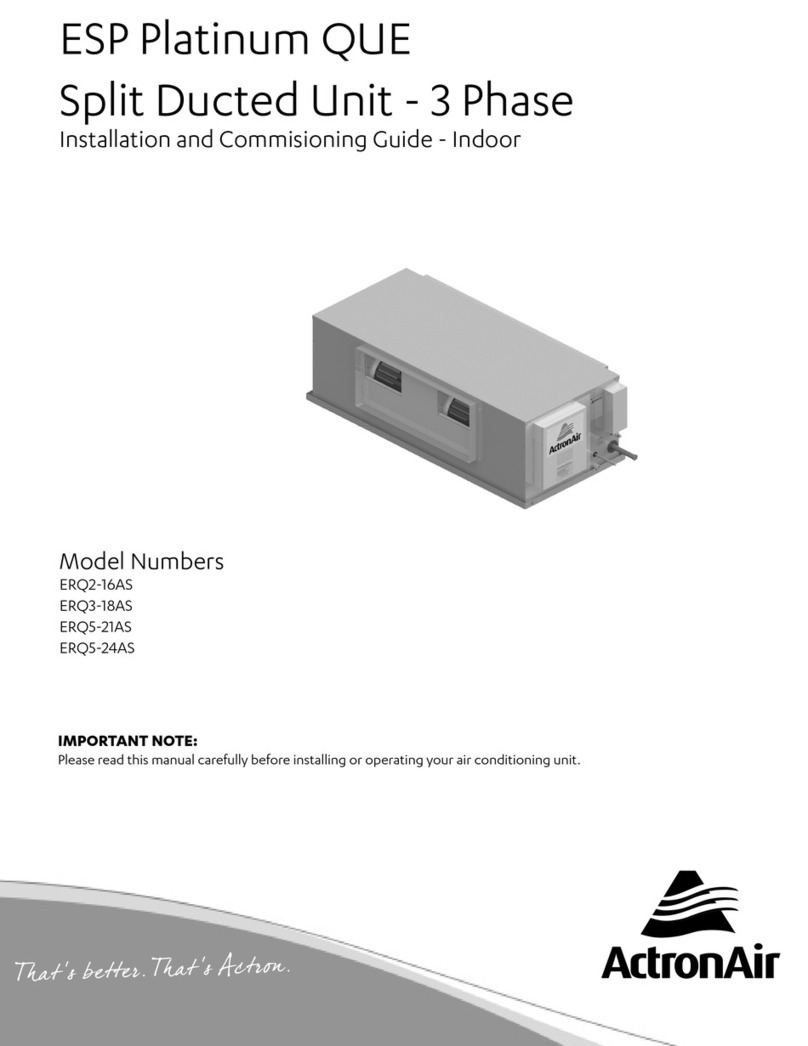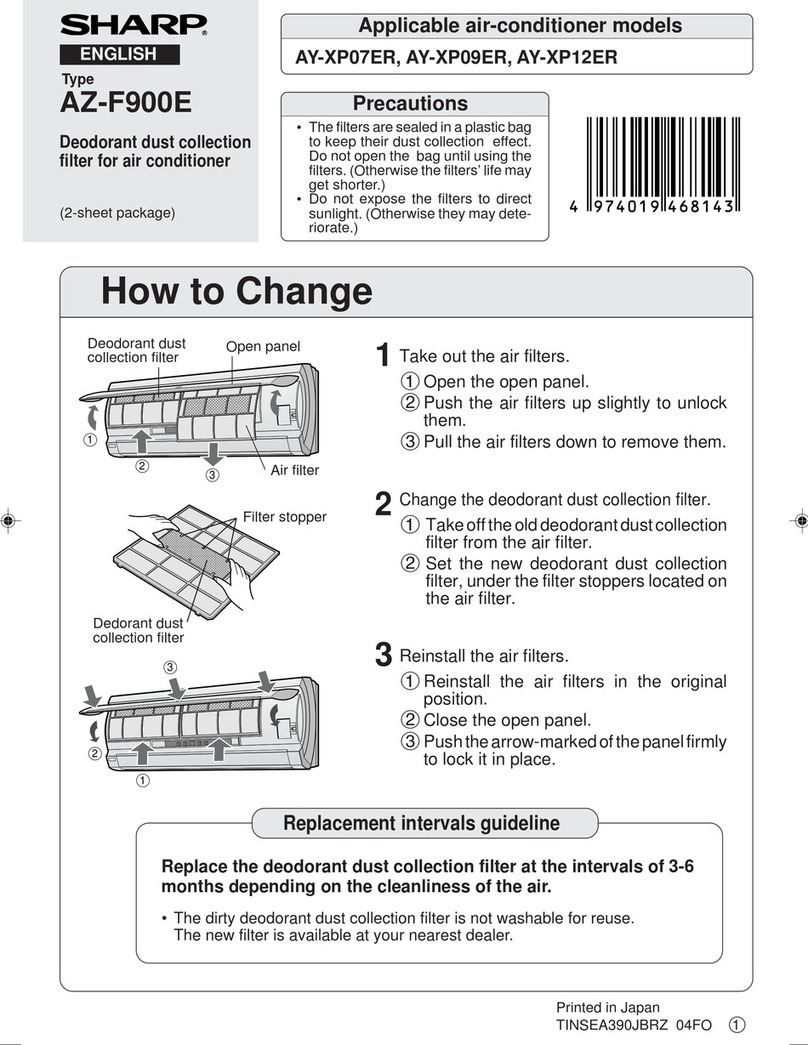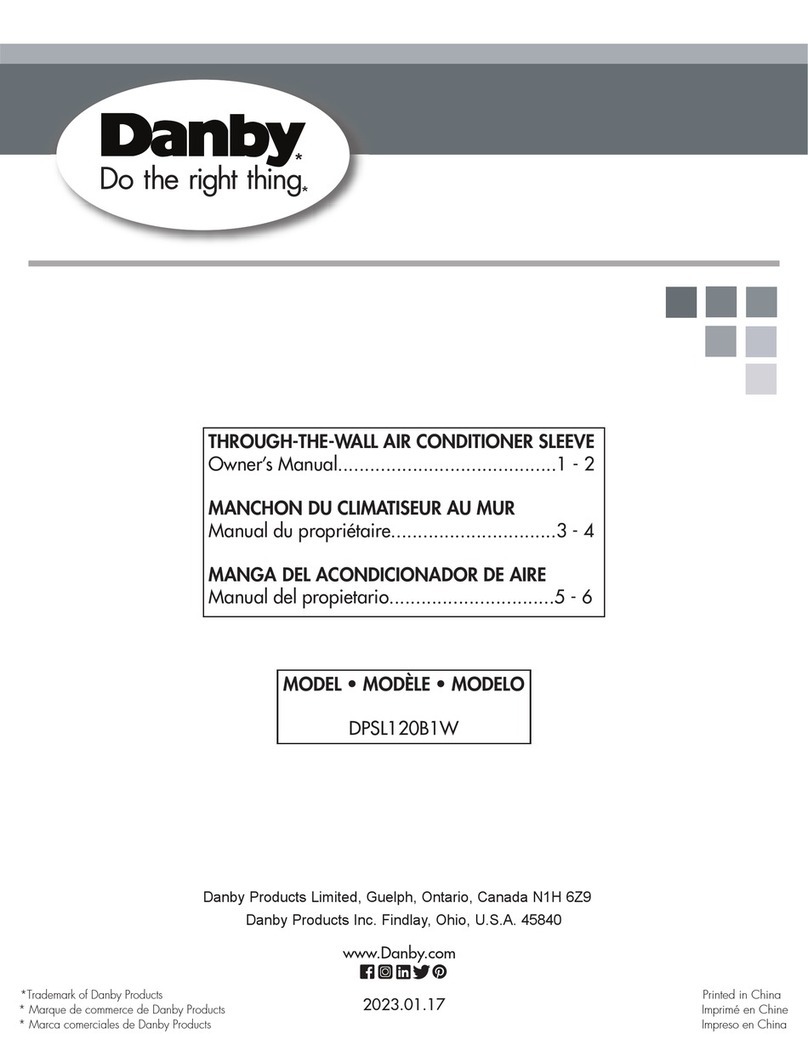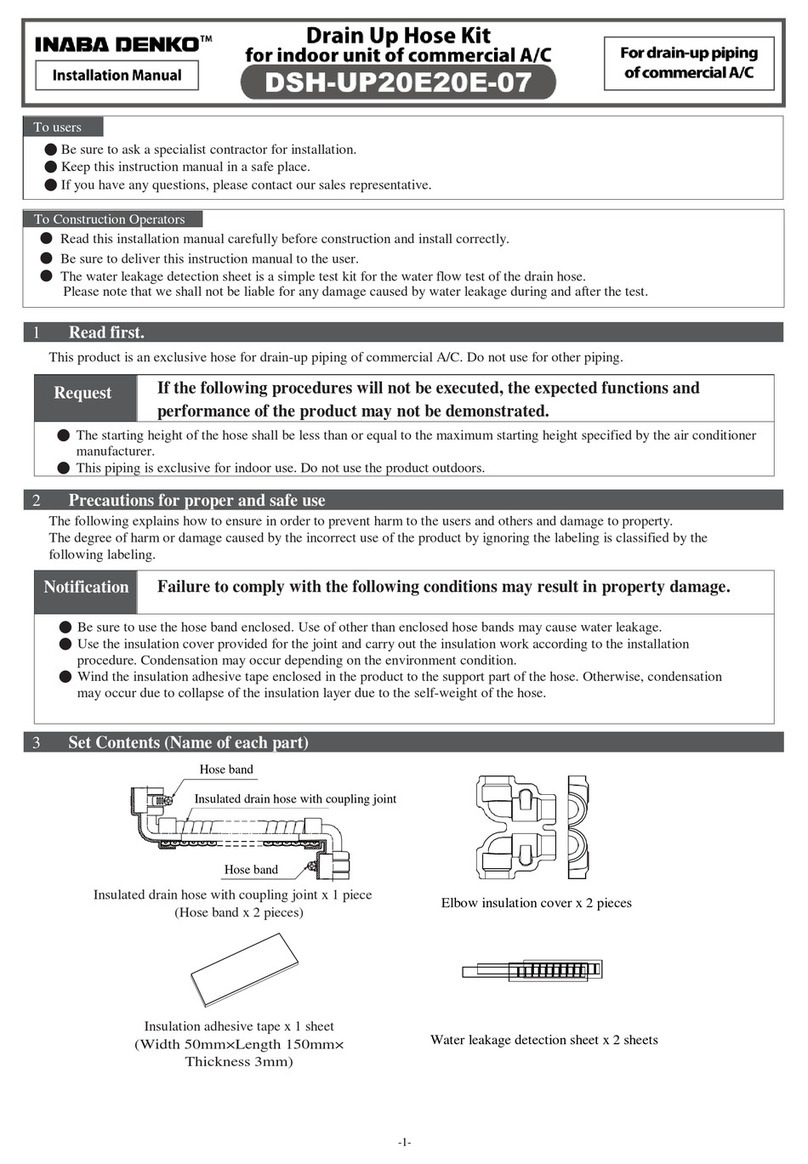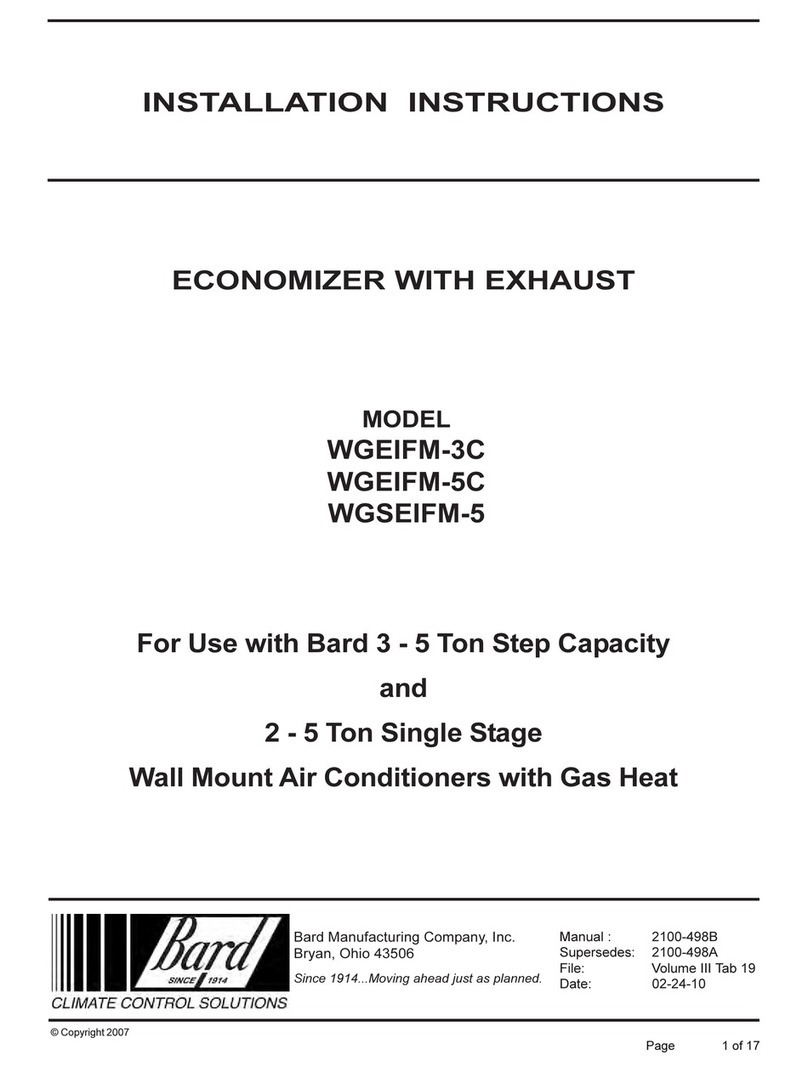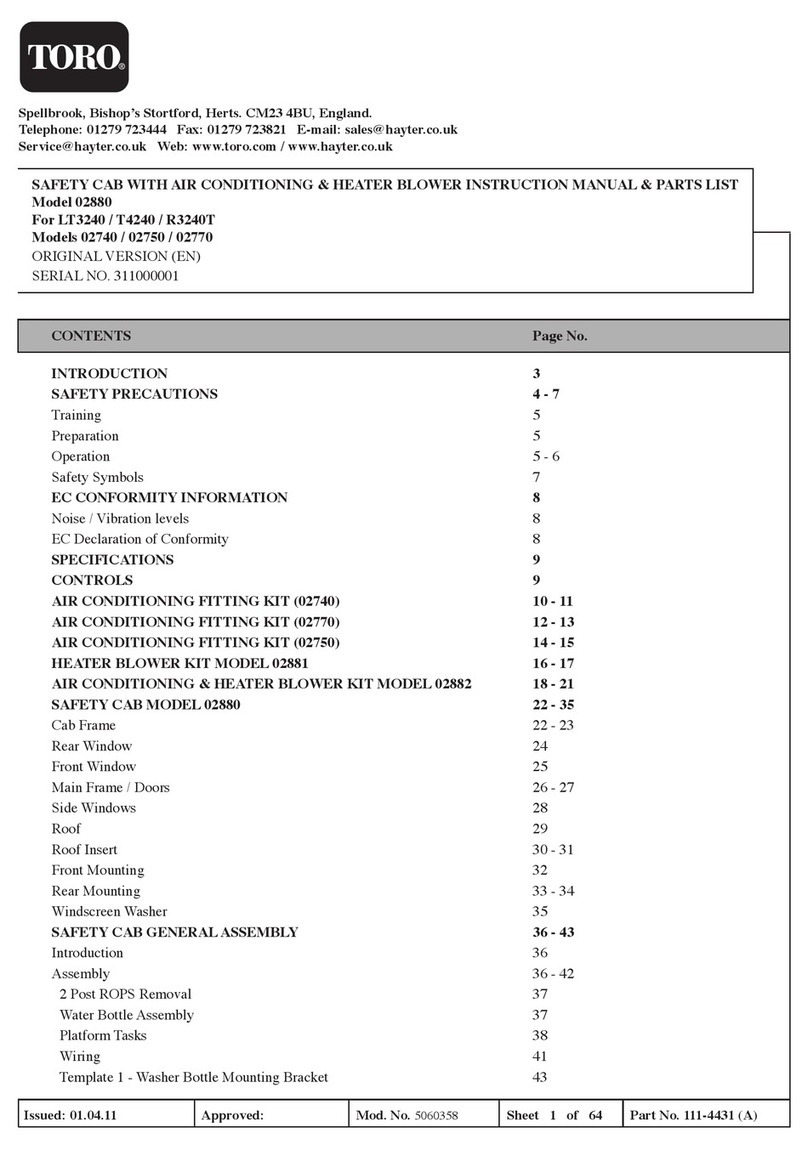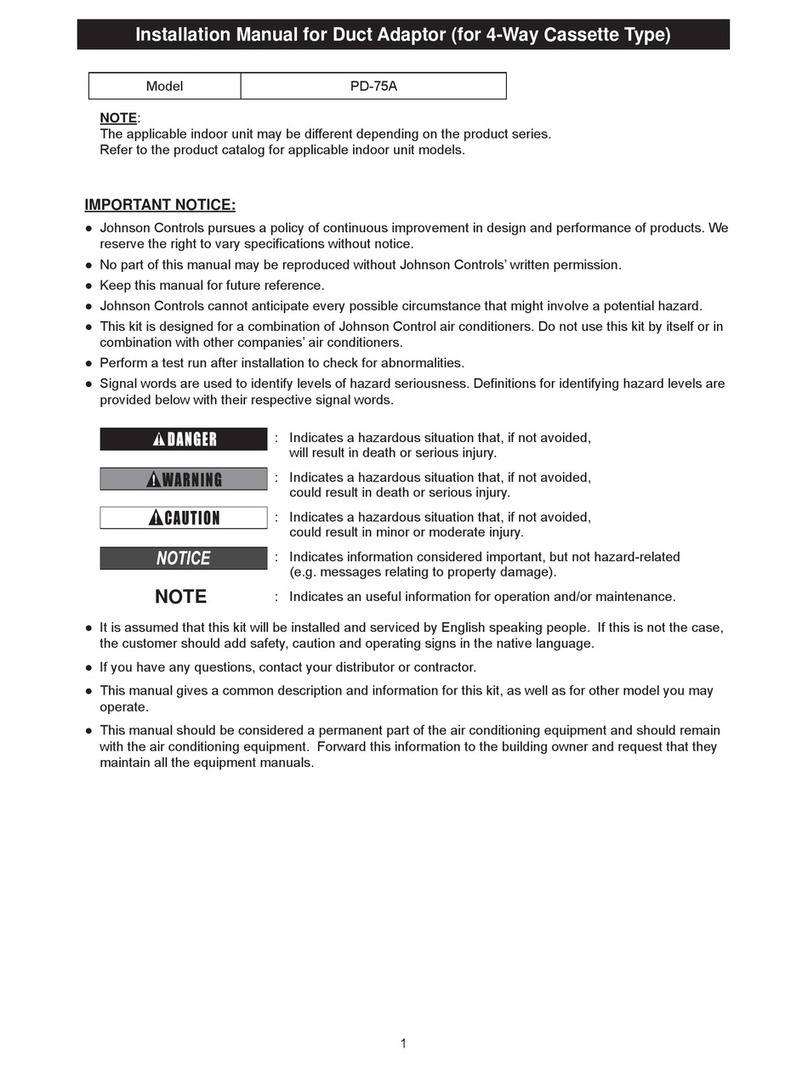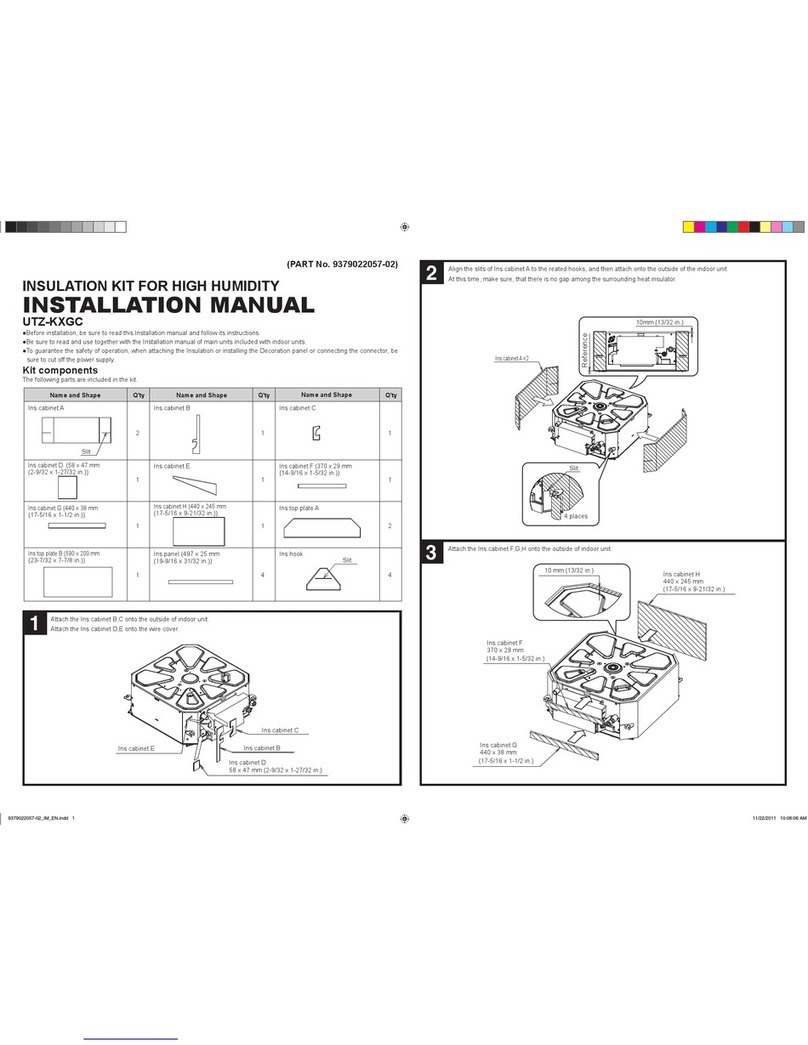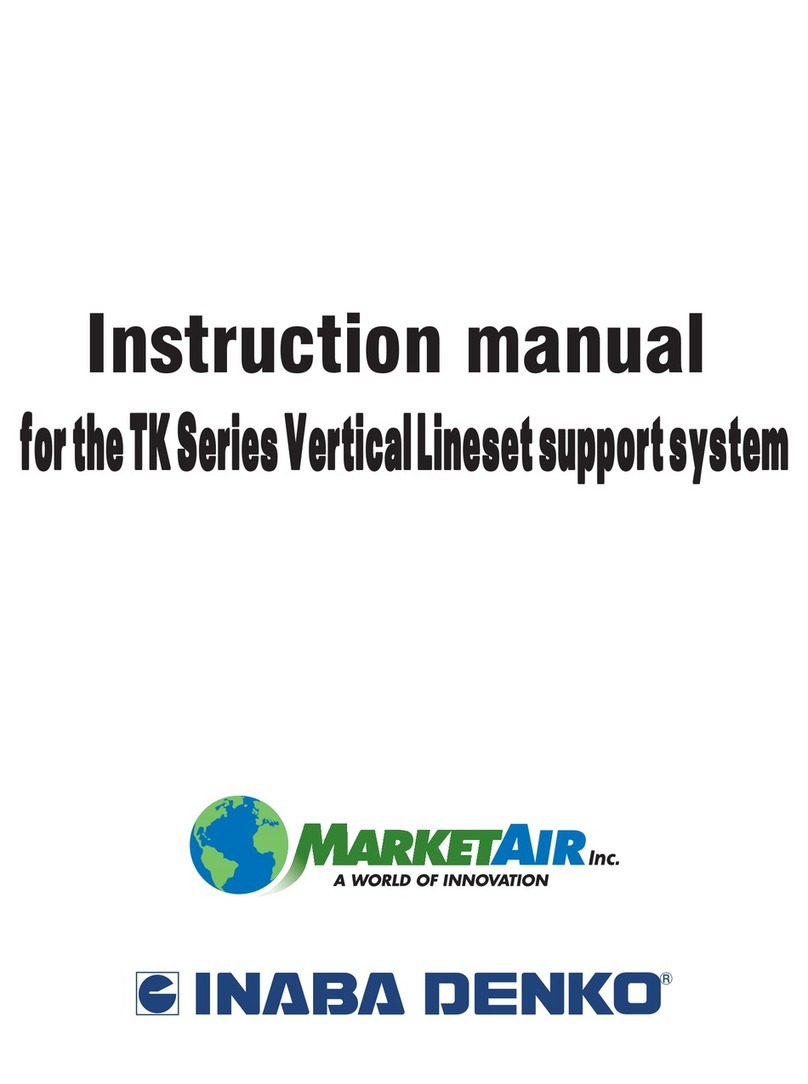
2
INSTALLER’S GUIDE
Be certain to cap the ends of the cut YL/RD and YL wires that
are not being connected to an accessory or the unit to reduce
the risk of a short.
4. Install Economizer Assembly
1. Apply two gaskets to horizontal economizer mounting
anges. See Figure 2 on page 3.
2a. Small Cabinet - BAYECON203AA/AB
(4WCZ6, 4YCZ6024-036, 4DCZ6036)
Set the horizontal economizer over the horizontal return air
opening on the unit. The notches in the bottom ange of the
economizer clear the two existing screws below the return
air opening of the unit.
2b. Medium Cabinet - BAYECON204AA/AB
(4WCZ6, 4YCZ6, 4DCZ6048-060)
Apply a gasket to the economizer and slide the topange of
the economizer under the lip between the top and bottom
sections of the unit. Mate the notches on the top ange of
the economizer with the existing screws between the top and
bottom sections of the unit. The notches on the bottom ange
of the economizer clear the two existing screws below the
return air opening of the unit.
3. Drill three (3) 9/64” holes through the mating holes in the top
ange of economizer and into the unit. Then, drive three (3)
#10 sheet metal screws to secure the top.
4. Drill three (3) 9/64” engagement holes on each side of the
economizer. Then, drive three (3) #10 sheet metal screws
into each side of the economizer to the unit.
5. Mount the Mixed Air sensor to the left Blower partition
using two sheet metal screws. See Figure 4, page 4. The
Yellow and Yellow/Black wires will connect to the Econo-
mizer wiring harness in a later step. Install any economizer
options at this time per instructions provided with the sen-
sor.
6. Apply a gasket to the Rain Hood anges. See Figure 2, page
3.
7. Place the Rain Hood over the horizontal return air opening
of the economizer. See Figure 2, page 3. Use the #10 sheet
metal screws provided to attach the hood to the economizer.
8. Route the main wiring harness. From the Economizer as-
sembly, route the main wiring harness to the Mixed Air sensor
and to the Control Box. See Figure 3, page 4.
9. Connect the two (2) Mixed Air Sensor wires (pulled from har-
ness) to the mating pigtail wires (with female quick connects)
from the Mixed Air Sensor.
10. In the Control Box, locate the ICMC Board in the upper left
hand corner of the Control Box. Find the YL/RD and YL wires
in the 12 pin connector. Leaving enough length of these wires
so that the ends going to the ICMC Board can be stripped,
cut these wires in two. Strip the cut end of the wires going
to the ICMC Board and connect to economizer wires as per
hookup diagrams on pages 6 and 7. Cap the ends of the
Yellow and Yellow/Red wires not being hooked up. Secure
all wires with wire ties so that there is no interference with
any moving parts in the unit.
11. In the Control Box, complete the wiring connections per the
appropriate wiring diagram on pages 6 and 7. Secure all
wires so that there is no interference with any moving parts
in the unit.
12. Attach the return duct to the economizer.
13. Power the economizer and run the checkout procedure on
page 8. Make desired adjustments to the controller: set the
minimum occupied damper position, set the outside air (if
enthalpy used).
14. Replace the unit Coil access panel, the Blower access panel,
and the Control Box access panel.
Sequence Of Operation - Units Equipped With
Honeywell W7459 Logic
NOTE: A (G) signal is required for the economizer to operate.
As shipped, the economizer will not operate when there is a
signal for Heating Modes utilizing gas heat.
Fan Only (G): When the thermostat sends a signal for fan only
(G), the economizer will open to the minimum position setting
regardless of the outdoor air conditions and the indoor blower
will operate at approximately 50% airow.
Heating (W1), (W2), (Y1, Y2 on Heat Pump or Dual Fuel
Models): When the thermostat sends a signal for auxiliary heat
(G) +(W1) or rst stage heat (G) + (Y1,Y2), the economizer
will open to the minimum position setting. When the ambient
temperature may be below 70F, the economizer will not fully
open to the economizing position, when there is a signal for
heat. In order to receive fresh air and open the dampers to the
minimum position setting, you must provide a G signal to the
unit from the thermostat or comfort control being used.
FREE COOLING NOT AVAILABLE: When the outdoor air
conditions are not sucient for “Free Cooling” the Economizer
will open to the minimum position setting only and the unit will
function.
FREE COOLING AVAILABLE:
1st Stage Cooling (Y1) + (O for Heat Pumps and Dual Fuel
models): When outdoor air conditions are sucient for “Free
Cooling” and the thermostat sends a signal for 1st stage cooling
(G) + (Y1) + (O for Heat Pumps and Dual Fuel models), the
economizer will modulate accordingly and the indoor blower will
run at approximately 70% airow.
2nd Stage Cooling (Y1) + (Y2) + (O for Heat Pumps and
Dual Fuel models): When outdoor air conditions are sucient
for “Free Cooling” and the thermostat sends a signal for 2nd
stage cooling (G) + (Y1) + (Y2) + (O for Heat Pumps and Dual
Fuel models), the economizer will modulate accordingly, the
compressor will operate on low speed, and the indoor blower
will operate at 100% airow.
Unit “OFF” Mode
When the economizer is not receiving a 24V signal to the TR
terminal, or if power is disconnected to the unit, the dampers
will be fully closed to the outside air and fully open to the return
air.
NOTE: Free Cooling refers to the process of circulating
unconditioned outside air, without operating the compressor, to
cool the structure.

